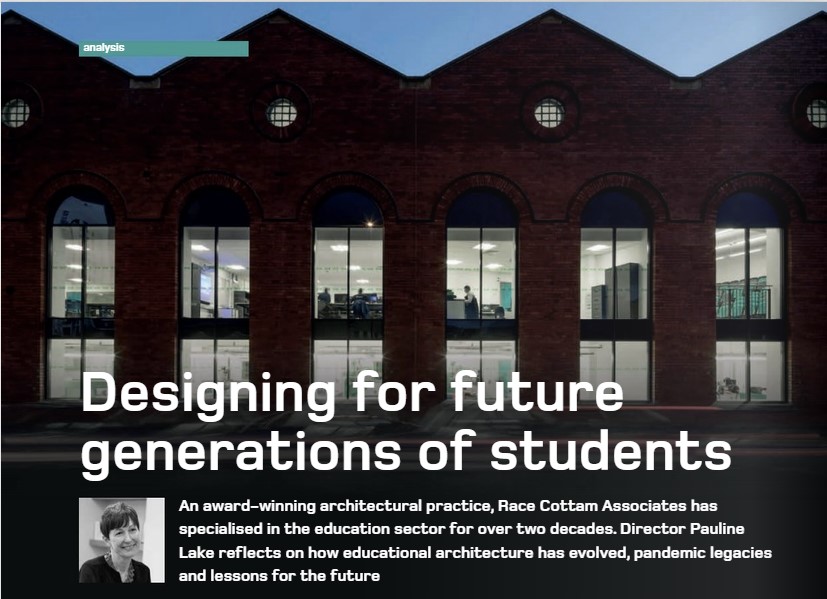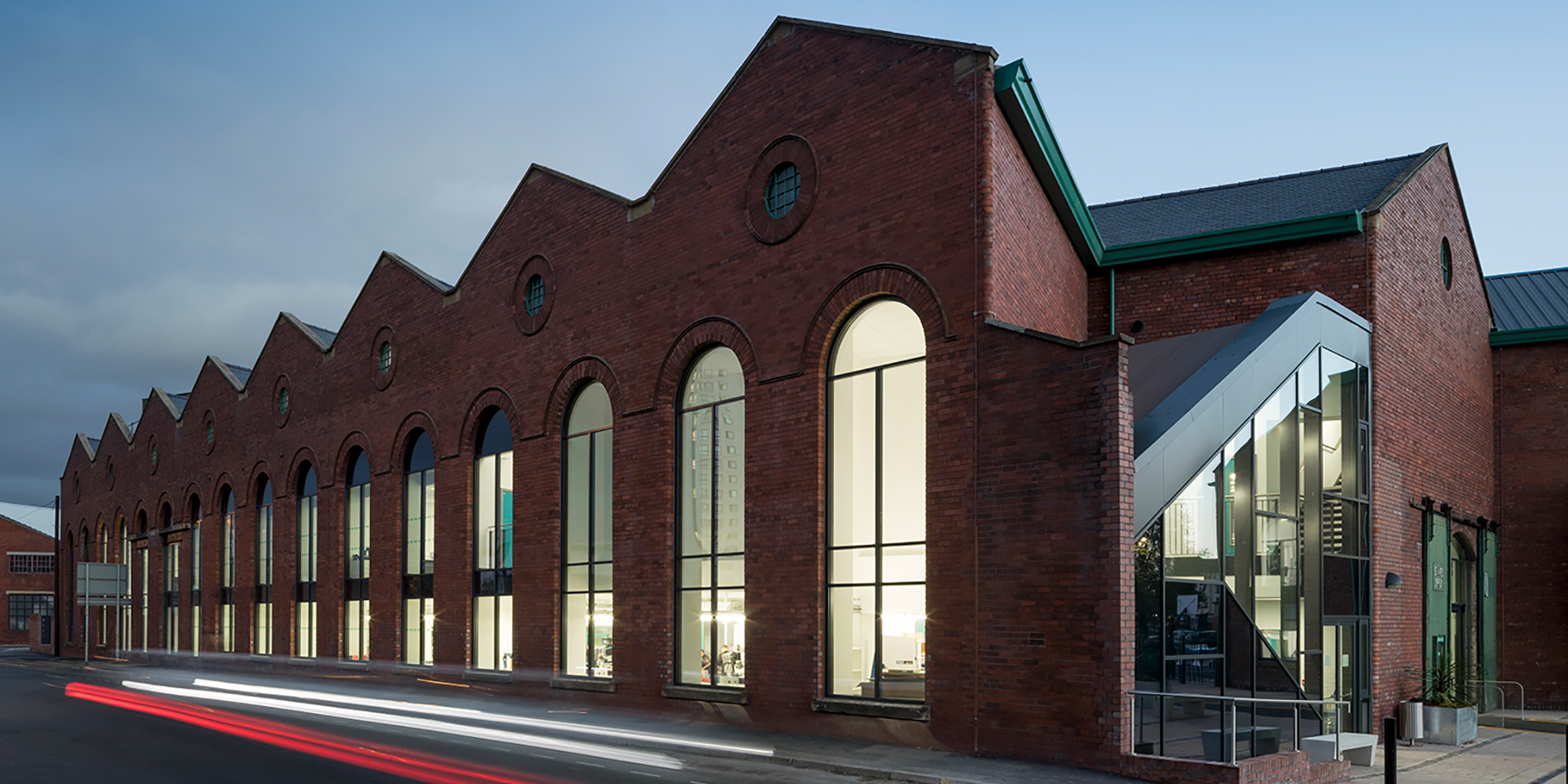Aug 23
Designing for Future Generations of Students
Race Cottam Associates has specialised in the education sector for over two decades. Director Pauline Lake reflects on how educational architecture has evolved, pandemic legacies and lessons for the future.
Looking Back: I think it’s fair to say that since the millennium, technology’s had the biggest impact on our designs. Twenty years ago, the first tablet had only just been invented, smart phones and social media weren’t anywhere near as prevalent as they are today, and video conferencing would take another decade before becoming mainstream. Today’s students have access to all these and more, creating an ‘anytime, anywhere’ learning approach. In design terms, this has translated most prolifically at colleges and universities. The ability to use immersive technology really brings education to life and creates a far more engaging environment. We’re able to use space more efficiently and flexibly, incorporating informal and remote learning, social spaces, and individual and group teaching zones.
In terms of school buildings, the most significant difference, certainly over the past decade, is the increased involvement of the DfE. Prior to this, designs were briefed by senior management teams and although this was successful to a point, it presented challenges especially when key personnel changed mid-way through. Now, most projects we deliver are managed and funded by the DfE, meaning a stricter brief and design criteria. Whilst this streamlines the process and ensures consistency of design and quality standards, it doesn’t
allow for wider staff/pupil engagement, which in our experience reveals the most informative and imaginative feedback.
Green Buildings: Sitting firmly alongside these changes has been the rise of the sustainability agenda, and this has two strands. Firstly, there’s the importance for the environment, and this is where existing estates can be pushed harder. Re-use of buildings is far better than new build. There’s no denying delivering more sustainable buildings is costly, but as we all face rising energy bills, this initial outlay is quickly paid back. Secondly, Gen Z and Gen Alpha are passionate about the environment. We see this reflected in the curriculum, the increased volume of FE courses related to sustainability, and the general appetite to understand more about their surroundings and how they work. In effect, educational buildings are becoming tools in their own right. We’re actually currently working on a pilot for the DfE’s GenZero project, which is seeking a new ultra-low carbon building standard for schools, so this will be an exciting step forward for students, staff and the industry.
Pandemic Legacies: How buildings work and create healthy, comfortable environments for occupants is one of the biggest pandemic lessons. Enforced remote learning awakened new patterns, meaning we could challenge the ‘norms’ around use of space, and demonstrate how estates can be leaner. For instance, we’re finding that there’s much more awareness about wayfinding, circulation routes, access and egress than ever before. By creating flexible spaces for collaboration, self-study, and virtual meetings, we can choose environments to suit the task, resulting in a more agile workforce and estate.
The other lesson links back to my sustainability point. The use of biophilic design principles and ensuring access to adequate natural ventilation and daylight has escalated significantly as people recognise the health and wellbeing benefits. Biophilia does more than improve physical and mental health though, it also has acoustic benefits, can improve thermal performance, air quality and create wayfinding.”


